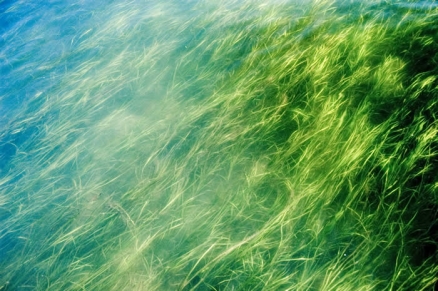Eelgrass restoration (Biology)
Contents
Eelgrass restoration
Eelgrass Restoration
Eelgrass (Zostera marina) provides a variety of essential ecosystem services, including habitat for shellfish and finfish, food chain production, and sediment stabilization. However, much of these vital habitats have been lost. Restoring these beds may be one strategy to sustain eelgrass populations, although as yet success in doing so has been limited. This article focuses on restoration in the northeastern USA.
In addition to the restoration of lost eelgrass beds as well as related coastal habitats such as salt marshes and shellfish beds described in this article, sustaining the health of eelgrasses requires a holistic approach that includes reducing physical impactson existing eelgrass beds, improving water quality, implementing appropriate legal protections, and developing community ties to eelgrasses and other coastal ecological communities
Eelgrass Loss in New England
Recent trends of eelgrass show a large decline throughout the New England region, with a larger decline in southern New England, as a result of regional patterns of coastal development. Between 1994 and 2006 there has been a decline in 27 out of the 30 eelgrass meadows in the Massachusetts bays and estuaries, with up to 70% loss in most of the sites. Similar downward trends in eelgrass populations are documented in many parts of New England.
The variability in space and time in rates of change in eelgrass distribution and abundance relates to the human impacts on coastal ecosystems. Worldwide there has been a 90% decline in the distribution of eelgrass and most restoration efforts have not been effective. It is very difficult to transplant eelgrass with a high rate of success. However, eelgrass restoration are being undertaken in several areas in Massachusetts, such as the Boston Harbor on Massachusetts Bay, Buzzard Bay and a few other sites considered as areas of special interest.
Eelgrass Restoration in Massachusetts
Several government agencies including the Massachusetts Division of Marine Fisheries (DMF) and the Department of Environmental Protection (DEP) embarked on a restoration project for eelgrass population in coastal waters of Massachusetts, in an effort to re-introduce eelgrass. Eelgrass restoration was considered, apart from been the most common sea grass on Massachusetts coastlines, as a mitigation for loss of development. However, the value of eelgrass meadows ecosystem services was also considered, primarily in providing refuge for juvenile fish and shellfish, sediment retention, nutrient cycling and its function as a primary producer, and the benefit of such ecosystem services on coastal communities.
Government organizations, working with communities and academic institutions, started an eelgrass transplanting project to re-introduce eelgrass meadows. Most of these agencies have considered different parameters for the transplanting of eelgrass. The most important concern is the site selection where the physical nd biological factors necessary for the successful growth of eelgrass are present. Site selection involves the necessary conditions that will meet the requirements of sustained eelgrass populations such as light availability, sediment composition, bathymetry as well as historical and current eelgrass meadows in Massachusetts coastal waters. Figure 1 shows areas where eelgrass restoration is currently being undertaken.
Eelgrass shoots are harvested from existing eelgrass meadows, because eelgrass can reproduce vegetatively, where lateral shoots separates from terminal and develop into an individual and mature shoot, terminal shoots are ideal for the transplanting of eelgrasses. This terminal shoots are transplanted to suitable sites with frames to help hold the shoots in place for 3 – 5 weeks when they would have sent out roots, and then the frames are ready to be removed with care not to remove the shoots from their new home. This method can also have an adverse effect on existing meadows while transplanting through the disturbance of sea beds.
Lee and Park (2008) have suggested ways to improve the methods to transplant eelgrass using shellfish. Eelgrass shoots are attached in holes drilled in the shells of oysterThese are dropped from boats to suitable sites that has allowed for a more successful transplant of eelgrass in South Korea. This method is cost effective than the methods currently used and it does not disrupt existing meadows during transplant.
The Massachusetts Division of Fisheries (DMF) also works with communities, institutions and several other agencies for the restoration of eelgrass. The participation of the public has increased the awareness of the values of eelgrass to the environment and community. This may improve the chances of the program’s success.
Lessons Learned and Future Vision
Adequate water and sediment quality is important for the successful restoration of eelgrass meadows. Site selection for eelgrass transplant is key, which identifies physical and biological characteristics that will support eelgrass growth. Taking into account sites for eelgrass transplant by the DMF several indicators were considered depth, exposure, water quality, sediment type, status and trends of eelgrass distribution. Although most sites were not successful in the Boston Harbor, this was likely mainly due to the sediment type and water clarity.
Some limitations in site water and sediment quality may potentially be overcome by multispecies restoration efforts, particularly the incorporation of shellfish restoration along with eelgrass planting or seeding. These species may support each others’ success, as shellfish will help with re-vegetation of eelgrass to surrounding areas and provide additional water filtration, while the eelgrass meadows will provide shelter and food for the shellfish.
References
- Bowen, R. E., & Riley, C. (2003). Socio-economic indicators and integrated coastal management. Ocean & Coastal Management, 46(3-4), 299-312. doi:DOI: 10.1016/S0964-5691(03)00008-5
- Burdick D. M, Short F.T, & Wolf J. (1993). An index to assess and monitor the progression of wasting disease in eelgrass zoster marina. Marine Ecology Progress Series, 94, 83-90.
- Drifmeyer, J. E., Thayer, G. W., Cross, F. A., & Zieman, J. C. (1980). Cycling of mn, fe, cu and zn by eelgrass, zostera marina L. American Journal of Botany, 67(7), 1089-1096. Retrieved from http://editors.eol.org/eoearth/wiki/Eelgrass_restoration_(Biology)
